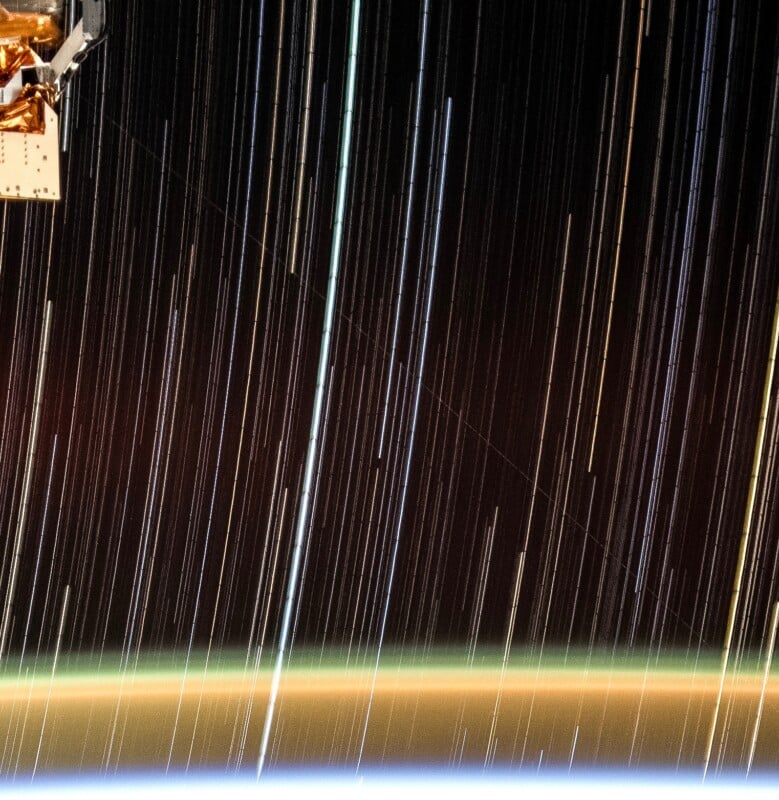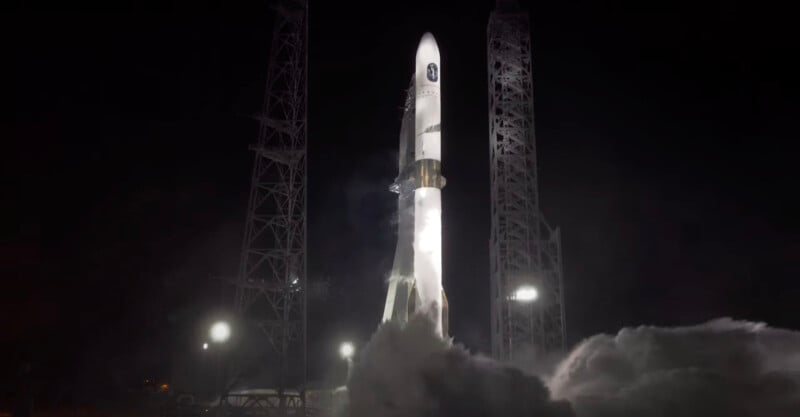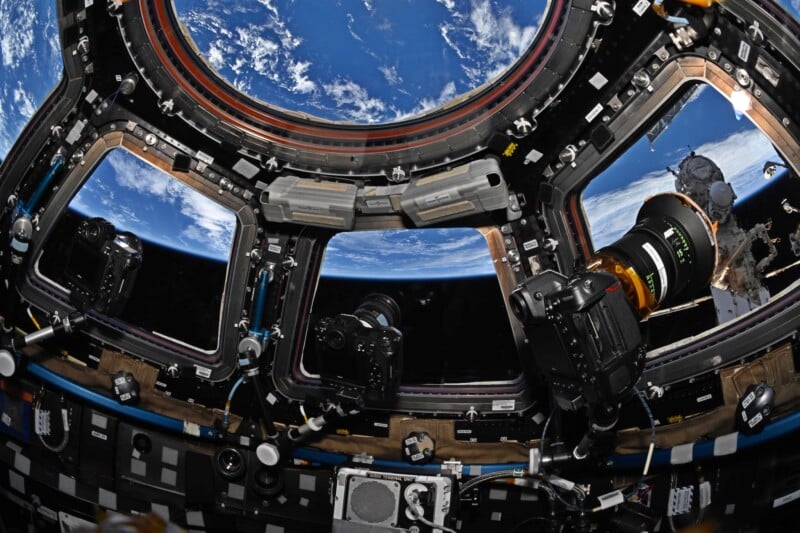 The faint line streaking from the bottom right toward the upper left is Blue Origin’s New Glenn rocket.
The faint line streaking from the bottom right toward the upper left is Blue Origin’s New Glenn rocket.Astronaut Don Pettit has captured yet another fascinating picture from space showing a long exposure of a rocket launch hidden among the stars.
The lines in the photo are utterly fascinating: while at first glance it seems like a standard star trail shot taken from the International Space Station (ISS), look a little closer and there is a faint line streaking in a different direction.
That faint line is Blue Origin’s heavy-lift New Glenn rocket; a 320-feet-tall (98-meter) spaceship that left Cape Canaveral Space Force Station in Florida last Thursday.
“New Glenn rocket launch photographed from ISS on Jan 16th,” Pettit writes on X. “This shows New Glenn upper stage in coast phase following booster separation.”
 New Glenn rocket preparing for blast off.
New Glenn rocket preparing for blast off.Pettit explains that the photo is a four-minute time exposure, and New Glenn can be seen as a faint streak moving from lower right to upper left as it crosses the brighter vertically oriented star trails.
“This was not an easy photograph to take,” he adds. “ISS was over Oklahoma at the beginning and over central Gulf of Mexico at the end of the exposure.”
 Pettit’s setup for the photo inside the cupola.
Pettit’s setup for the photo inside the cupola.Pettit posted up in the cupola — a small, dome-shaped module on the ISS that provides a panoramic view of Earth and space — and set up three cameras with wide-angle lenses, “figuring one would catch its exo-atmospheric trajectory.”
Spaceman Photographer
At 69 years old, Pettit is currently NASA’s oldest-serving astronaut and second oldest to ever visit space. Since blasting off into orbit for the fourth time in September, the veteran has captured numerous wonderous photos including on January 14 when he captured the Milky Way, Starlink satellites, and false dawn in a single remarkable photo, which astrophotographer Andrew McCarthy said “might be the best photo ever taken from the ISS.”
Yesterday, Pettit demonstrated how to change camera lenses in space. Of course, changing lenses in zero-gravity is incredibly useful as photographers don’t have to worry about dropping their precious glass.
“So while back on Earth, how often do you accidentally drop your lens expecting it to float?” one person joked.
Image credits: Photographs by NASA/Don Pettit






 English (US) ·
English (US) ·